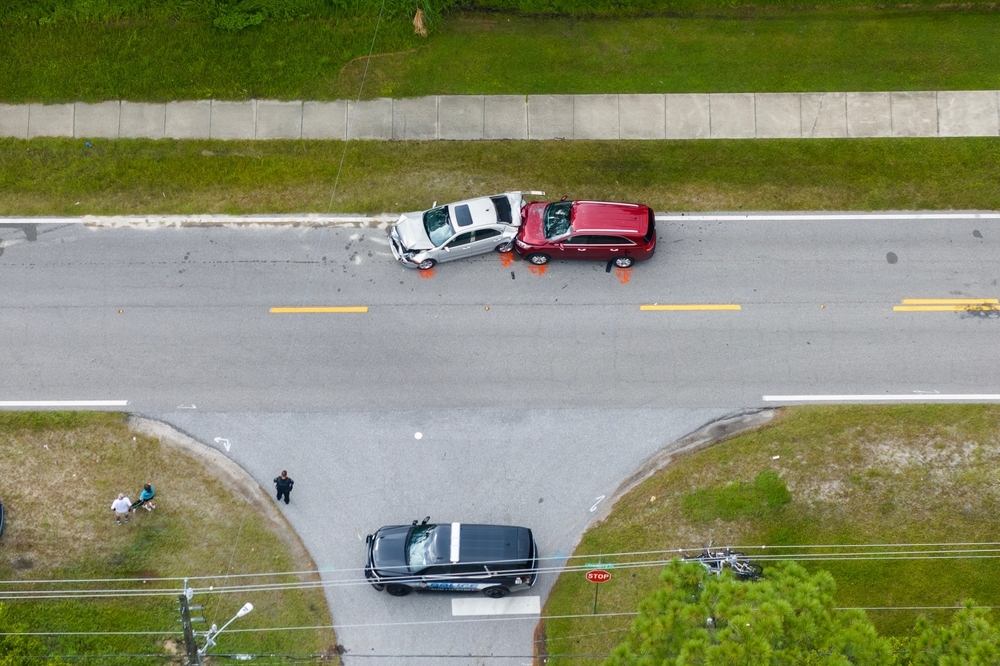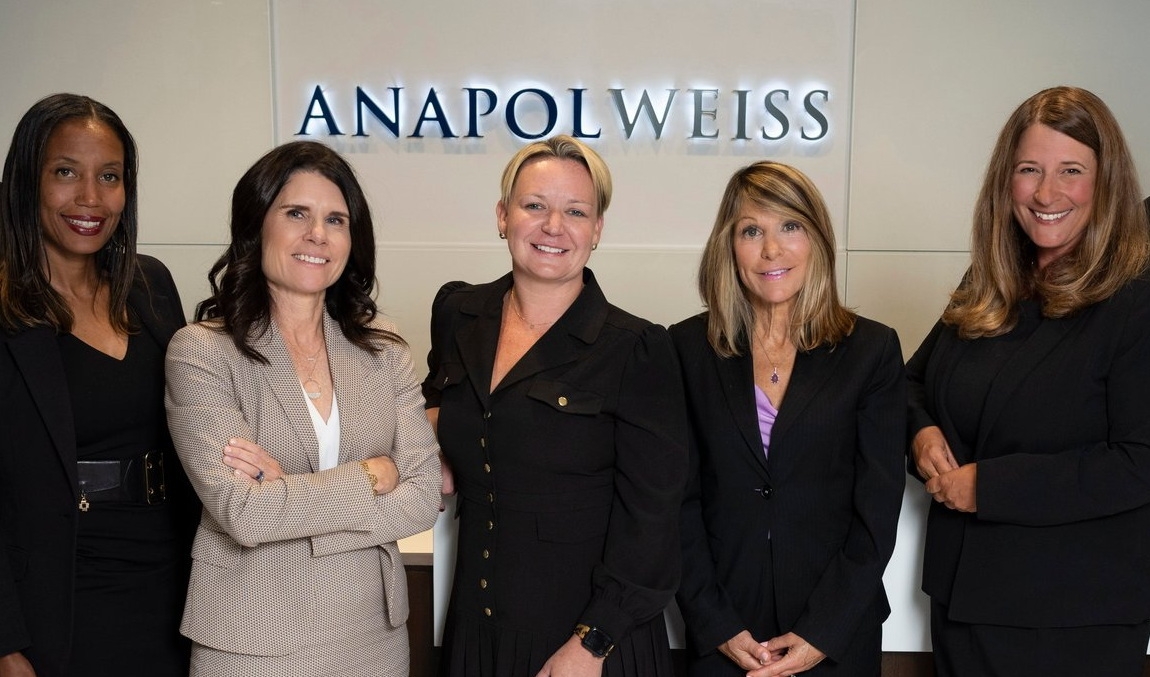
It’s hard to believe Thanksgiving is already here. While the day is filled with good friends, family traditions, and lots to eat, it’s also one of the busiest travel weekends of the year. Like other states, Pennsylvania sees a dramatic spike in roadway traffic over Thanksgiving week. Highways such as the Pennsylvania Turnpike, I-95, I-80, I-76, and Route 322 become packed with long-distance travelers, commercial trucks, college students returning home, and out-of-state drivers unfamiliar with local road patterns. This surge creates conditions where certain types of crashes occur far more often than they do at other times of the year.
Understanding the most common Thanksgiving-related car accidents can help drivers recognize risks, avoid dangerous situations, and stay safer on one of Pennsylvania’s most congested travel weekends.
1. Rear-End Accidents in Stop-and-Go Traffic
Thanksgiving often brings heavy congestion, especially on the Turnpike, major interstates, and near large shopping areas. Sudden slowdowns, stalled traffic, and unexpected bottlenecks lead to a sharp increase in rear-end crashes.
These collisions commonly occur when:
- Drivers follow too closely
- Traffic stops abruptly
- Out-of-state drivers misjudge following distance
- People look at GPS directions instead of the road
- Brake lights are difficult to see in rain or fog
Rear-end crashes may seem minor at first. However, they often cause whiplash, back injuries, head trauma, and multi-car chain-reaction accidents.
Similar Post: Injured by a Distracted Driver in Philadelphia? Here's How to Recover Compensation
2. Accidents Involving Distracted Driving
Distraction is already one of the leading causes of crashes in Pennsylvania. During Thanksgiving travel, the problem intensifies because drivers often:
- Check traffic conditions
- Use navigation apps
- Coordinate plans with family
- Look for exits or rest stops
- Eat in the car to save time
Even a two-second glance away from the road at 65 miles per hour can be enough to cause a devastating collision. Distracted driving accidents frequently occur on interstates and major highways where speeds remain high despite congestion.
3. Weather-Related Crashes on Wet or Icy Roads
Pennsylvania weather in late November is unpredictable. Rain, early snow, black ice, and freezing temperatures all increase the risk of:
- Skidding
- Hydroplaning
- Losing control during lane changes
- Sliding into intersections
- Rear-end collisions on wet pavement
Mountainous regions, such as those along I-80 or I-81, can experience sudden weather shifts that out-of-state drivers are not prepared for. Darker evenings and early sunsets also reduce visibility and increase reaction times.
4. Crashes Caused by Drowsy or Fatigued Driving
Long holiday drives often start very early or end very late. Many people push through hours of traffic without stopping, especially if they want to avoid peak travel periods. Fatigue slows reflexes and impairs judgment in ways similar to alcohol.
Fatigue-related crashes often involve:
- Drifting between lanes
- Overcorrecting
- Failing to brake in time
- Falling asleep behind the wheel
- Colliding with roadside barriers
Accidents involving drowsy driving are especially common on rural highways, stretches of the Turnpike, and long interstates where the scenery changes slowly.
5. Holiday Drunk Driving Accidents
Thanksgiving Eve, also called "Drinksgiving" or "Blackout Wednesday," is one of the most dangerous nights for alcohol-related crashes. Pennsylvania law enforcement consistently reports spikes in DUI arrests and fatal collisions during Thanksgiving weekend.
Common holiday DUI crash scenarios include:
- Drivers leaving bars or holiday parties
- Early morning collisions after little sleep
- Out-of-state visitors unfamiliar with PA alcohol laws
- Impaired drivers traveling at high speeds on major highways
These crashes are often severe because impairment slows reaction times and reduces awareness during already-busy travel periods.
Similar Post: Top Mistakes to Avoid After a Car Accident in Philadelphia
6. Multi-Vehicle Pileups on Highways
Dense traffic on interstates increases the likelihood of multi-vehicle pileups, especially when drivers cannot stop in time. Sudden traffic jams, deer crossings, abrupt weather changes, and chain-reaction rear-end collisions all contribute to large Thanksgiving crashes.
These pileups commonly occur in:
- Heavy fog zones
- Snow-prone mountain areas
- High-speed sections of the Turnpike
- Areas near highway construction
Multi-vehicle crashes often cause severe injuries and significant property damage due to multiple points of impact.
7. Intersection and Left-Turn Accidents
With an increase in local travel to grocery stores, restaurants, and shopping centers, intersection accidents rise sharply around Thanksgiving. These crashes often happen when:
- Drivers rush through yellow lights
- People make unsafe left turns
- Out-of-town visitors misread road signs
- Distracted drivers fail to yield to oncoming traffic
- Weather reduces visibility at night
Intersection collisions often involve side-impact crashes that can cause serious injuries, including whiplash, spinal trauma, and broken ribs to drivers and passengers.
8. Parking Lot and Retail Area Accidents
Black Friday brings extreme congestion around malls, shopping centers, and retail plazas. Parking lots become crowded, chaotic, and filled with drivers who are:
- Searching aggressively for parking
- Reversing quickly from tight spaces
- Not watching for pedestrians
- Distracted by holiday shopping or their phones
Parking lot crashes frequently involve pedestrians, including children, elderly shoppers, and people carrying bags that block their view. Although typically low-speed, these accidents can cause serious injuries due to impacts with vehicles.
9. Accidents Involving Commercial Trucks
Thanksgiving week brings a spike in commercial truck traffic as companies push to complete pre-holiday shipments. More 18-wheelers on the road means a greater risk of:
- Jackknife accidents
- Underride collisions
- Wide-turn crashes
- Blind-spot accidents
- Tire blowouts
- Rear-end collisions caused by long stopping distances
Truck accidents often result in severe or catastrophic injuries due to the sheer size and weight of the vehicle.
Why Thanksgiving Travel Leads to More Severe Injuries
The increase in traffic alone raises the number of motor vehicle accidents, but several factors make Thanksgiving crashes especially dangerous:
- Heavier congestion creates more multi-vehicle collisions
- Drivers may travel long distances on unfamiliar roads
- Weather conditions change quickly across Pennsylvania
- Nighttime travel increases as the sun sets earlier
- Higher numbers of young or inexperienced drivers return home from college
When these risks combine, even minor mistakes can lead to serious harm.
What You Should Do If You Are Injured in a Thanksgiving Car Accident in Pennsylvani
If you are hurt in a crash during Thanksgiving travel, take these steps to protect yourself and your potential personal injury claim:
- Call 911 and get a police report
- Seek medical attention immediately
- Gather photos and video of the scene
- Exchange information with all drivers
- Look for witnesses nearby
- Avoid discussing fault at the scene
- Contact an experienced personal injury attorney before speaking with insurance adjusters
Not only are insurance companies not on your side, but they often move quickly to settle holiday-related crashes. Having experienced legal representation helps ensure your injuries and losses are fully evaluated.
Call Anapol Weiss After a Thanksgiving Car Accident in Pennsylvania
If you or a loved one was injured in a car accident over Thanksgiving, you do not have to navigate the aftermath alone. Anapol Weiss has decades of experience handling complex car accident claims across Pennsylvania. Our personal injury attorneys investigate auto accidents thoroughly, identify every liable party, and fight for full and fair compensation.
Contact Anapol Weiss today at 215-735-1130 for a free consultation so you can understand your options and begin the path to recovery. We represent clients all throughout Pennsylvania, including Philadelphia.
Disclaimer: This blog is intended for informational purposes only and does not establish an attorney-client relationship. It should not be considered as legal advice. For personalized legal assistance, please consult our team directly.

